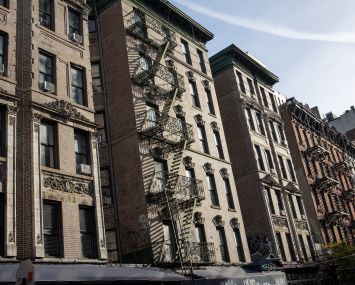Lenders that want to back today’s retail projects need to get comfortable with new complexities, as well as new risks, arising from the increased importance, role and demands of high-end retail tenants.
Those tenants continue to thrive, even in an era when the Internet has put out of business many of the commodity retailers that retail developers and lenders once counted on. Think of Borders, Linens ’n Things, Bombay Company, Tower Records, HMV, Circuit City and others that sold mass goods to the mass market and exist no more.
In contrast, retail tenants targeting the higher-end market seem to be achieving great success in the current market.
It stands to reason that when shopping for high-end luxury items, high-end customers want to touch and feel the goods before buying them – more so than they would if they were making more mundane purchases. When you shop online, it’s not so easy to touch and feel the goods. So high-end shoppers visit stores, spend lots of money and create demand for the high-end retail leases that now drive many new developments.
But high-end tenants and projects present challenges distinct from those posed by the traditional middle market retail chains. Because luxury retailers have an approach and needs that differ from those of other tenants, their leases often differ as well. They are more flexible and often more vigorous in their protections for the tenant. The unique requirements of luxury retail leases can give lenders cause for concern, particularly in construction loans backing a high-end project that hasn’t yet lined up all of its tenants. For any lender who wants to back such a project, though, there isn’t another option.
Problems often arise because upmarket retail tenants prefer their surrounding tenants to be as exclusive as they perceive themselves to be. Unlike traditional retailers, these retailers like to see competing brands nearby. They want to see a critical mass of other similar stores, because that draws the right buyers. This agenda stands in contrast to the traditional concern in retail leasing about “exclusives” and protection from competition.
High-end brands care so much about these issues that they often negotiate the right to reduce their rent if the developer fails to have a certain number of stores open for business by a set date. In the worst case, if the developer can’t achieve and maintain a critical mass, a high-end retailer may even have the right to close.
These positions fly in the face of traditional lender concerns about the sanctity of rental income and lending against solid rental income that won’t be interrupted. If things go even a little bit wrong, high-end retail income may in fact be interrupted or the tenant could leave.
These tenants will also typically have very expensive build-outs of their space, whether funded by the developer, the tenant or a combination of the two. Because of the expense involved, they’ll pay special attention to what happens if the lender forecloses – even more so than the average tenant. Thus, a high-end tenant will always start by demanding typical “nondisturbance” protection, the lender’s agreement not to disturb the tenant’s lease after any foreclosure. Any such tenant will often go further and demand that the lender assume responsibility after foreclosure for any construction work or contributions that the tenant was still owed—potentially very large numbers. Again, lenders won’t like that idea, but it is often part of the landscape for high-end retail leases.
These leases also often bring a level of volatility not seen in ordinary retail. Even after a successful opening of the project and the store, tenants will sometimes have the right to shut down if their sales don’t exceed some minimum level. They’ll have the right to change their space from one brand to a different brand, often from a very large stable of brands. And tenants will have broad flexibility to change the interior of their space.
More generally, these retailers often announce that they’ll use their own forms of lease—not the landlord’s form of lease, thank you very much. And of course the retailers’ lease forms are likely to be oppressively pro-tenant, reflecting the worldview, and often the negotiating position, of high-end retailers.
Traditional retail lenders aren’t used to all of this. Yes, they’ve seen anchor tenants with the right to “go dark,” they’ve been unhappy with occasional exclusive uses, and they long ago resigned themselves to tenant-friendly big box leases. But when a lender finances a project targeted to high-end retail tenants, they enter a whole new world of potential grief.
The potential volatility and business challenges of any such project will force the lender to pay a lot more attention to the landlord’s “business” of leasing to high-end retailers, as opposed to viewing the borrower as just an owner of some valuable collateral. The developer’s skills and connections become far more important here than they would in the case of, for example, an ordinary strip shopping center.
Lenders need to get comfortable with it, though, because high-end retail is growing in a way that many other areas of retail are not. Moreover, in many cases, those retailers are the ones that will pay the most rent, draw the most desirable shoppers and make a retail project work. A lender just needs to learn to live with them.
Joshua Stein is the sole principal of Joshua Stein PLLC. The views expressed here are his own. He can be reached at joshua@joshuastein.com.



